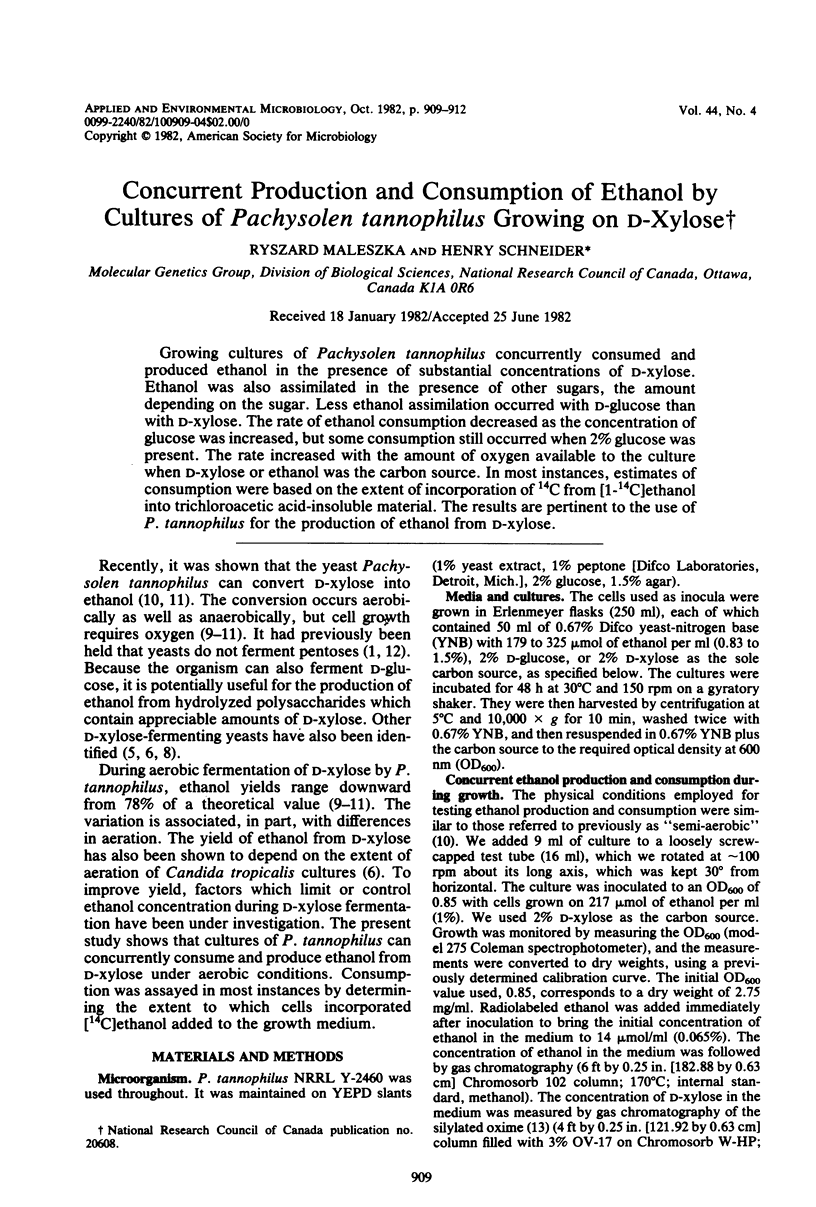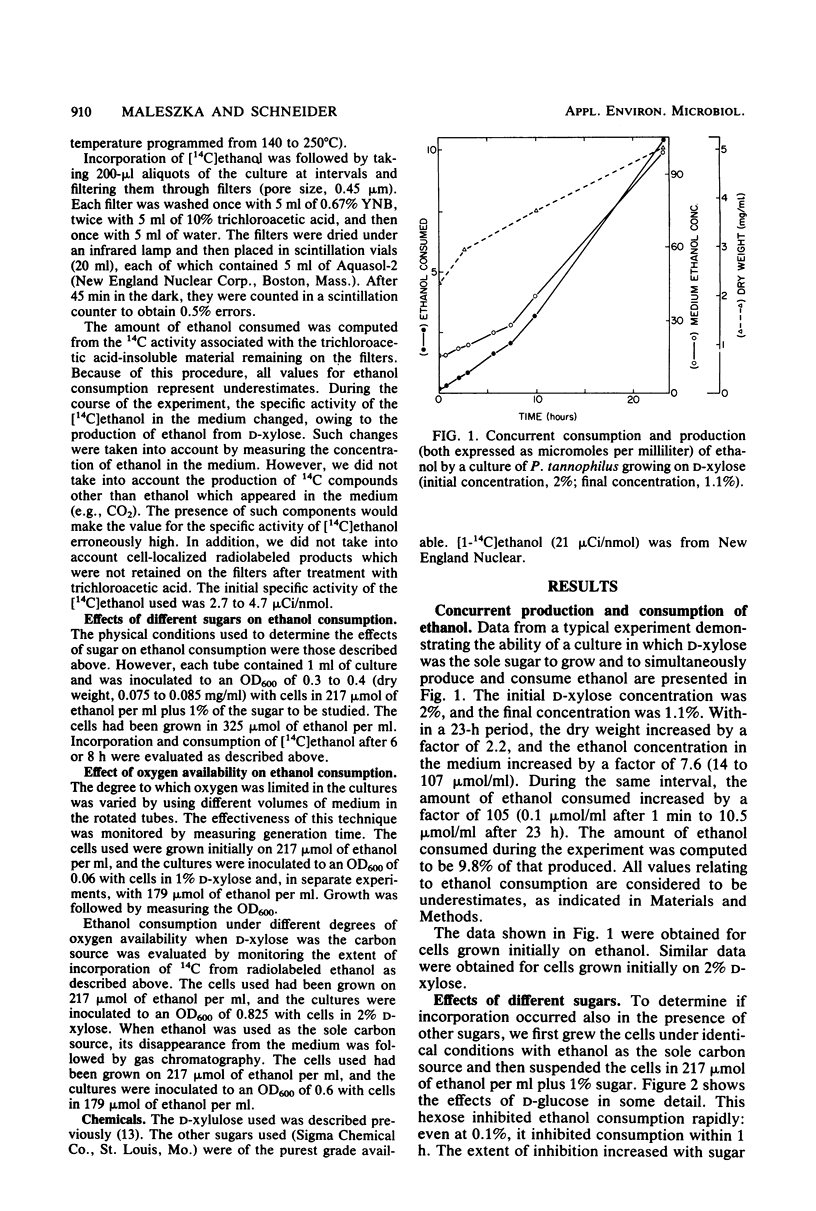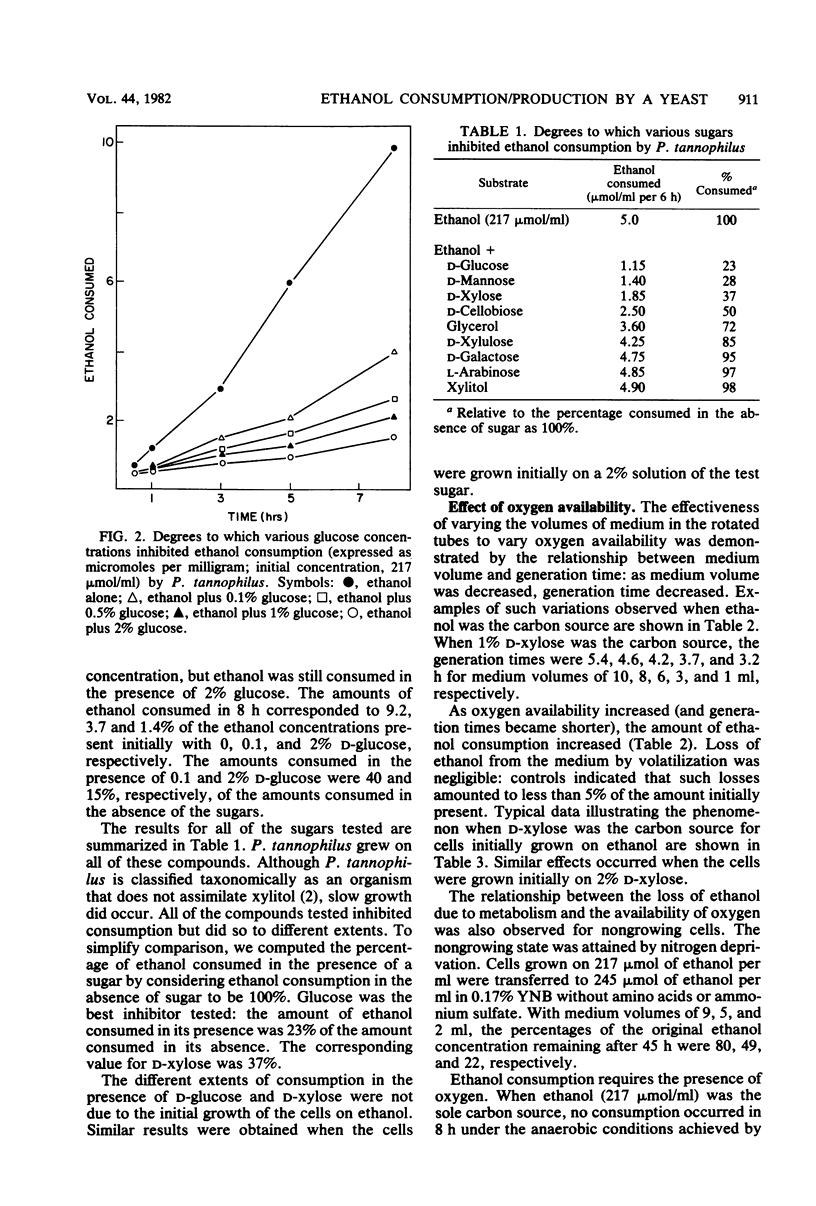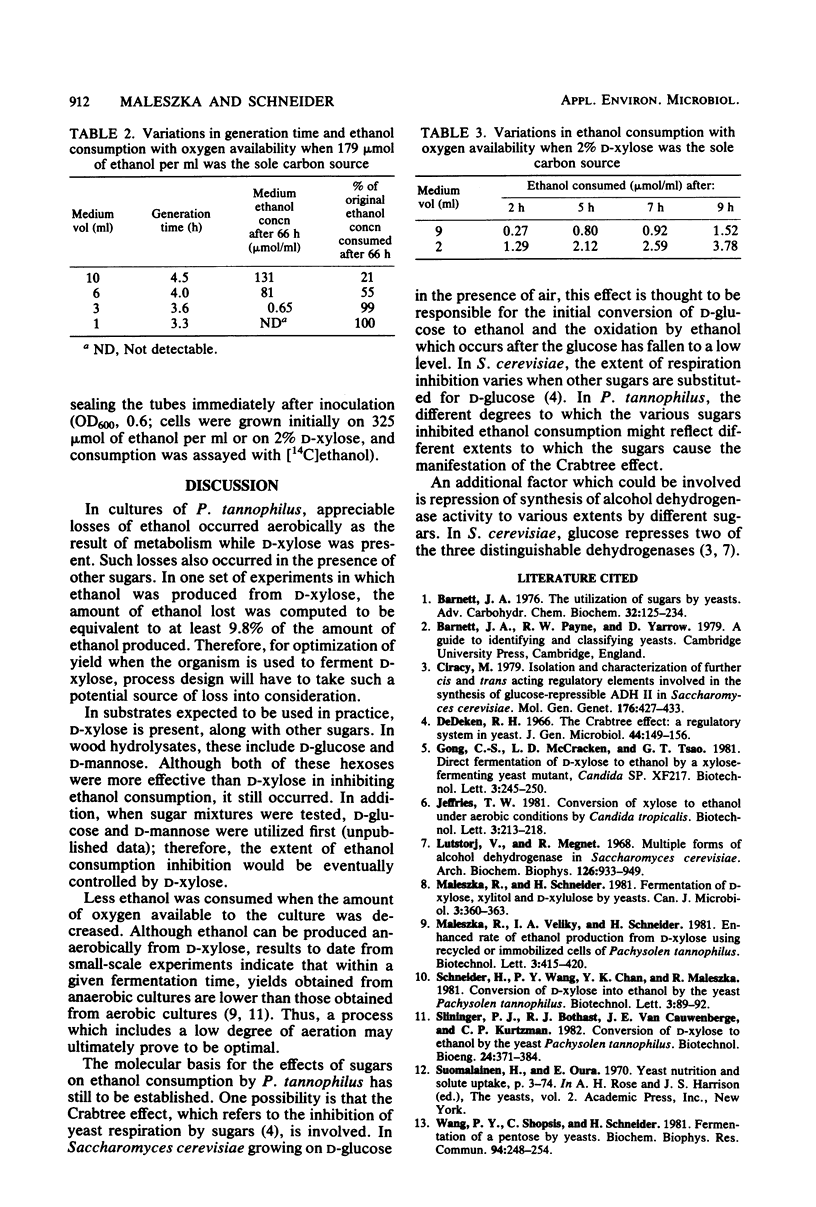Abstract
Growing cultures of Pachysolen tannophilus concurrently consumed and produced ethanol in the presence of substantial concentrations of d-xylose. Ethanol was also assimilated in the presence of other sugars, the amount depending on the sugar. Less ethanol assimilation occurred with d-glucose than with d-xylose. The rate of ethanol consumption decreased as the concentration of glucose was increased, but some consumption still occurred when 2% glucose was present. The rate increased with the amount of oxygen available to the culture when d-xylose or ethanol was the carbon source. In most instances, estimates of consumption were based on the extent of incorporation of 14C from [1-14C]ethanol into trichloroacetic acid-insoluble material. The results are pertinent to the use of P. tannophilus for the production of ethanol from d-xylose.
Full text
PDF



Selected References
These references are in PubMed. This may not be the complete list of references from this article.
- Barnett J. A. The utilization of sugars by yeasts. Adv Carbohydr Chem Biochem. 1976;32:125–234. doi: 10.1016/s0065-2318(08)60337-6. [DOI] [PubMed] [Google Scholar]
- Ciriacy M. Isolation and characterization of further cis- and trans-acting regulatory elements involved in the synthesis of glucose-repressible alcohol dehydrogenase (ADHII) in Saccharomyces cerevisiae. Mol Gen Genet. 1979 Nov;176(3):427–431. doi: 10.1007/BF00333107. [DOI] [PubMed] [Google Scholar]
- De Deken R. H. The Crabtree effect: a regulatory system in yeast. J Gen Microbiol. 1966 Aug;44(2):149–156. doi: 10.1099/00221287-44-2-149. [DOI] [PubMed] [Google Scholar]
- Lutstorf U., Megnet R. Multiple forms of alcohol dehydrogenase in Saccharomyces cerevisiae. I. Physiological control of ADH-2 and properties of ADH-2 and ADH-4. Arch Biochem Biophys. 1968 Sep 10;126(3):933–944. doi: 10.1016/0003-9861(68)90487-6. [DOI] [PubMed] [Google Scholar]
- Wang P. Y., Shopsis C., Schneider H. Fermentation of a pentose by yeasts. Biochem Biophys Res Commun. 1980 May 14;94(1):248–254. doi: 10.1016/s0006-291x(80)80213-0. [DOI] [PubMed] [Google Scholar]


